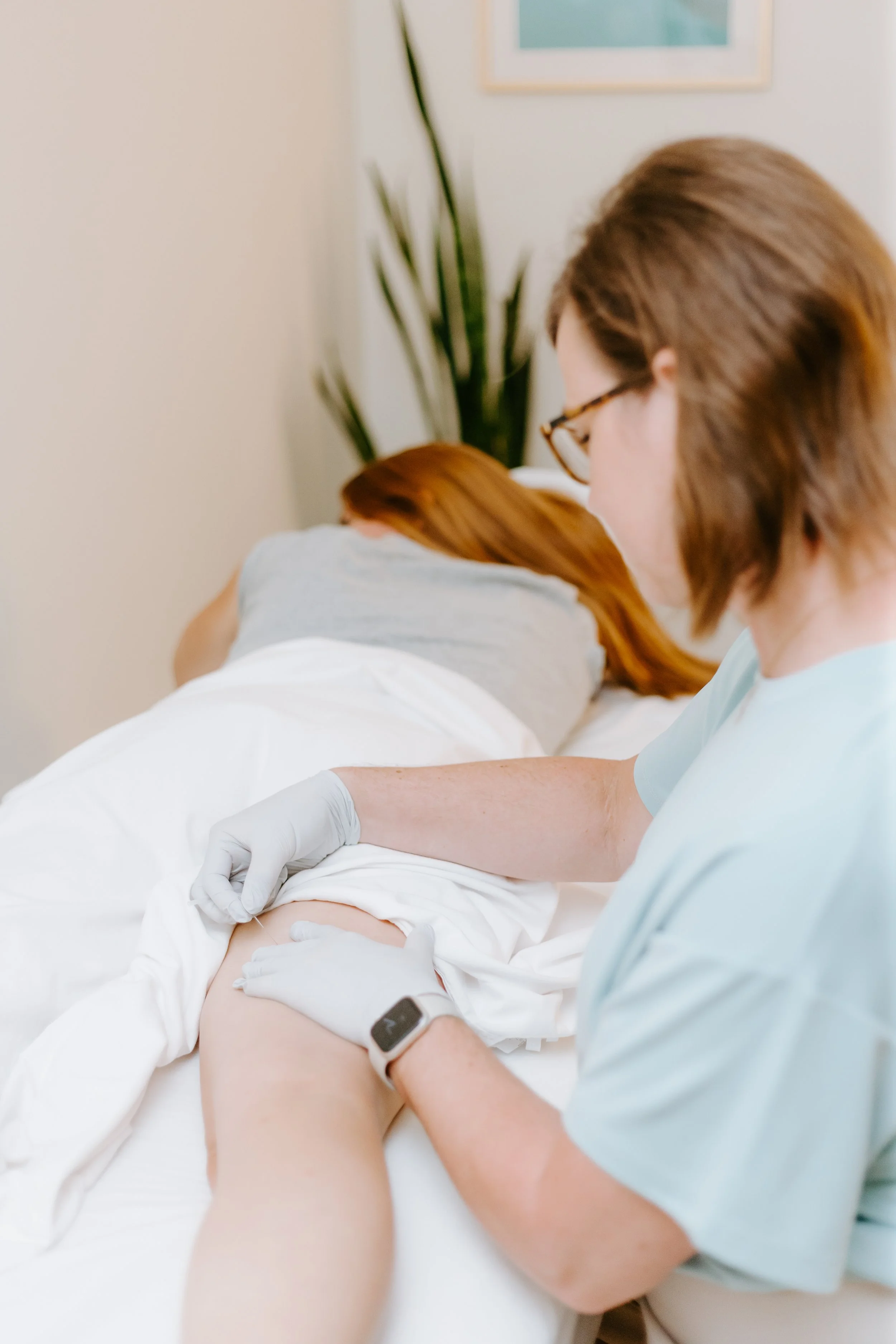Pelvic Floor Dry Needling: A Powerful Tool for Pain Relief and Recovery
You may have heard of dry needling as a technique to relieve muscle pain, but did you know it can also be used to treat the pelvic floor and surrounding muscles?
Dry needling can be a valuable addition to pelvic floor rehabilitation, especially for symptoms such as:
Pelvic pain
Abdominal pain
Tailbone pain
Painful intercourse
Postpartum scar discomfort
Urinary urgency or frequency
What Is Dry Needling?
Dry needling is a safe and effective technique used by trained professionals to help relieve pain and improve mobility. It involves inserting very thin, sterile needles into muscles and painful points to:
Decrease muscle tension
Improve blood flow
Interrupt pain signals
Restore normal tissue function
What Is Pelvic Floor Dry Needling?
Because the pelvic floor is made up of muscles, it can also develop tightness or tender points - just like your neck, shoulders, or back. Dry needles can be inserted into these pelvic muscles to help:
Reduce pain
Improve circulation
Support better muscle relaxation and contraction
Enhance overall pelvic floor function
This can be done by carefully inserting the needles externally through the pelvis to reach specific pelvic floor muscles. Don’t worry, it’s not what you were thinking 😉
What to Expect During a Session
Your first session will include a thorough evaluation, including a detailed history of your symptoms and medical background, assessment of posture, breathing, movement patterns and pelvic floor function.
If dry needling is appropriate for you, it may be included as part of a comprehensive treatment plan, always with your informed consent. Of course, dry needling is always optional, and your comfort is our top priority! Your plan may also include:
Hands-on (manual) therapy
Breathing and core exercises
Lifestyle and movement education
Other targeted exercises to support healing
What to Expect After Dry Needling
It’s common to feel mild soreness in the treated area for 24–48 hours. This is similar to the feeling after a good workout. Gentle movement, walking, or light exercise can help ease the soreness and support recovery.
Final Thoughts
Pelvic floor dry needling is just one tool in a broader, holistic approach to pelvic health. When combined with other physical therapy strategies, it can help you move more comfortably, reduce pain, and feel more in control of your body again.
If you’re curious whether pelvic floor dry needling could be helpful for you, book an appointment today!



